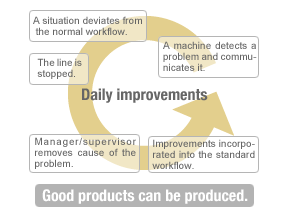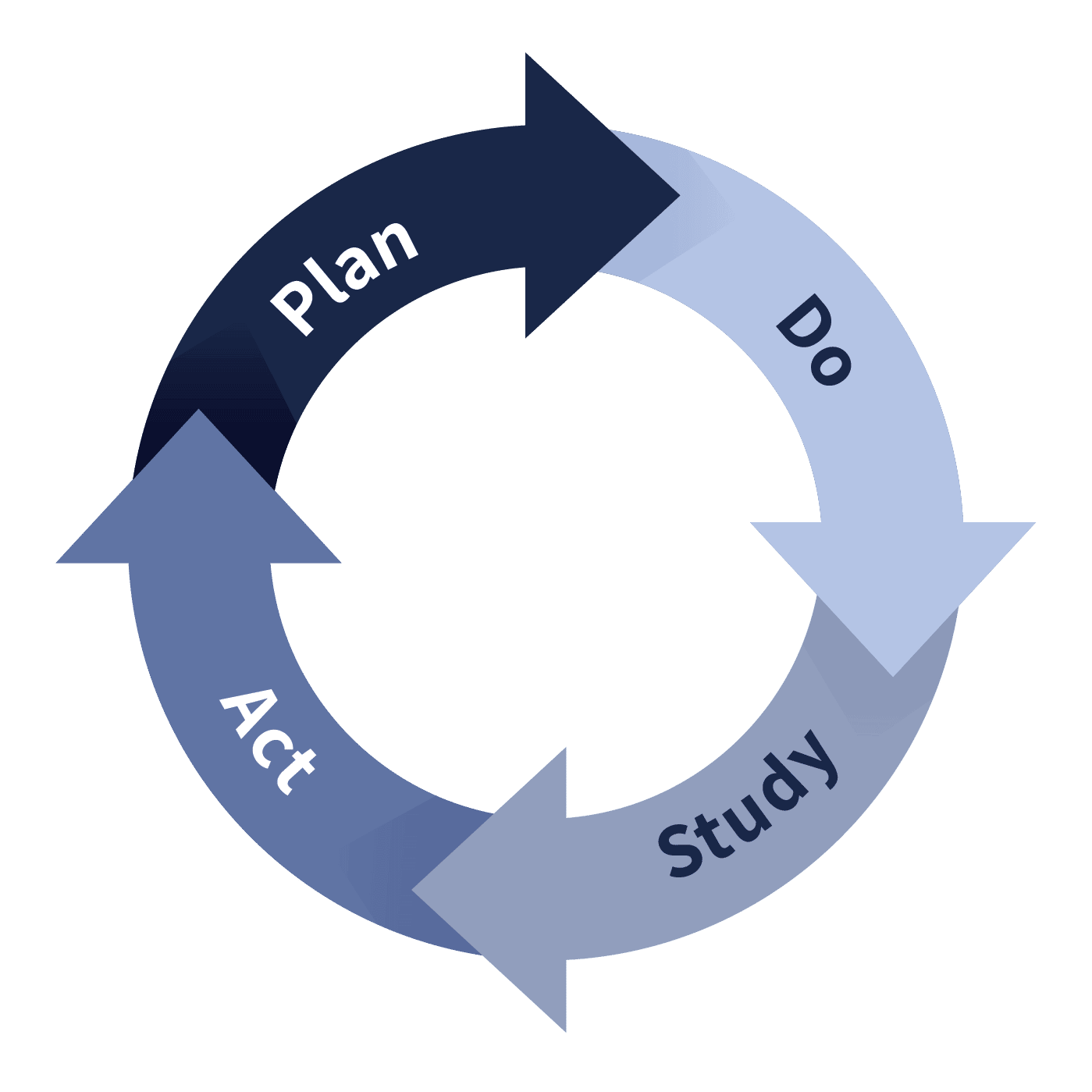A culture of continuous improvement helps companies do better. But more importantly, it is a powerful culture that, if implemented well, will enable your organization to grow long-term.
What is continuous improvement?
Since their origin in manufacturing, continuous improvement processes have been applied in business, healthcare, psychotherapy, government, and more. But what is continuous improvement? Some researchers define it as a methodology of focused incremental innovation within an organization, while others use it as an umbrella term to describe several methodologies for organizational progress.
At Shamaym, we think of continuous improvement as a culture of sustained development that, with the right tools, can be embedded into any organization and help it learn and grow. Regardless of which definition we choose, a continuous improvement culture offers multiple benefits, including:
- Competitive and sustainable organizational growth
- Improved organizational culture
- A more engaged workforce that works smarter, not harder
- Improved productivity and quality
- Maximal ROI on technologies and other tools, through minimal investment
And yet, culture change in any organization requires an investment. To better understand why an organization should invest in a continuous improvement process, we need to explore more deeply what it means in theory and practice.
Origins of continuous improvement methodologies
Organizations that decide to implement a continuous improvement process can choose from a growing body of methods and tools, but contemporary process improvement methodologies originate from the Japanese management philosophy of Kaizen. The word kai roughly translates from Japanese as “do or change”, and zen as “complete or whole”. So Kaizen means gradual efforts toward wholeness. Western business culture has come to know this as continuous improvement.
Kaizen developed in post-World War II Japan to quickly rebuild a fractured economy with relatively low capital investment. The Japanese government developed labor contracts that guaranteed workers more protections. In exchange for job security, workers were expected to be more engaged in the company’s success by identifying and offering suggestions for process improvement. These developments laid the groundwork for Kaizen, which spread west through business exchanges between the United States and Japan over decades.

Key continuous improvement principles
The principles of process orientation, dedication to incremental improvement, and people orientation are key to Kaizen and permeate throughout other continuous improvement processes, too:
Process orientation: A focus on improving processes rather than results. This does not mean that results are not important, rather that by aiming for process improvement, results will improve. In practice, employees should be encouraged and supported to initiate process improvement, and provided with the tools to do so.
Incremental improvement: An emphasis on incremental process improvement. By focusing on incremental change, the baseline level of performance is continually improving. Continuous improvement researchers cite three reasons for the focus on incrementalism: it spotlights personal responsibility, creating a space for individuals to suggest and make small, implementable changes. For example, a manager notices that remote meetings are not productive because not everyone can access the agenda. So the manager tests a new scheduling tool that is later rolled out company-wide. Incrementalism also offers time for learning to be transmitted between individuals and teams (at Shamaym we call this team learning) and across departments (what we call cross-team learning). Finally, incrementalism creates a never-ending cycle toward quality and efficiency.
People orientation: Kaizen and other continuous improvement methodologies work by leveraging the eyes and ears of all people in an organization, from C-suite executives to workers on the factory floor. Practically, this means that management should provide opportunities, space, and content for continuous improvement that fits the needs and skills across all hierarchy levels.
Other continuous improvement methodologies
Lean Manufacturing
In the 1950’s, Toyota executive Taiichi Onho sought to improve production and reduce waste on his assembly lines. The two pillars of Just-In-Time production – producing just enough at any given moment – and jidoka, or automation through correction of defects, resulted in the Toyota Production System (TPS) and inspired what is known today as lean manufacturing. Lean aims to reduce waste in every area of production, from supplier networks to the factory floor – anything that does not add value to the production process is eliminated, and new processes are integrated into the future workflows.

Kanban
A tool to complement lean, kanban helps manufacturing and knowledge workers around the globe visualize and manage their workflows. It was originally designed as a box containing a kanban card, which moved across company workstations and signaled a need for additional production. Today kanban comes to life as a physical or digital task management board, ensuring that work is distributed evenly between teams, and that each team is working on what is actually needed, to ensure maximal use of resources.
Six Sigma
This method gained popularity in the 1980’s after it saved Motorola $14 billion over 10 years. It is a systematic method of process improvement that relies heavily on statistics and the scientific method. Six Sigma gave rise to the DMAIC model: define opportunities, measure performance, analyze opportunities, improve performance, and control performance.
Scrum
A continuous improvement process and project management method popular in the software development world, scrum emphasizes communication and flexibility as reality changes in the fast-paced development process (fun fact: the name “scrum” originates from rugby, where players create a formation by interlocking their arms and push together against the opposing team, while kicking the ball back toward them).
Extreme Programming (XP)
Another continuous improvement process specific to the software development world, the XP model features frequent releases of software updates to easily accommodate evolving customer needs.
Putting continuous improvement into practice
We’ve tackled continuous improvement on a theoretical level, but how do we put these ideas into practice in the workplace?
Before process improvement can begin, it is critical to remove barriers through visual management, or in other words, to create a transparent work environment. Successes and problems, and the data to support them, should be displayed in full light. Once they are seen, they can be solved or improved upon. Transparency allows managers to stay attuned to reality, and employees to know exactly what is expected of them. Transparency also sends an early warning signal when a problem arises.
After a transparent environment has been established, the simplest form of a continuous improvement process is the PDSA (Plan, Do, Study, Act) Cycle, practiced like this:
- Plan: identify an area that needs improvement and set targets (improvement can be suggested by a person at any level in the organization, with that person accepting responsibility for implementing the change they suggest)
- Do: implement the change
- Study: test and observe efficacy of change in a controlled environment
- Act: standardize the improved process; set targets for next improvement
Of course, changes can give rise to natural bumps – it would be foolish to assume that the implementation of a new process would proceed flawlessly every time. This fact gives way to a second cycle, SDSA:
- Standardize
- Do
- Study
- Act
The SDSA cycle serves to smooth over any issues that arise from changes that came about during the improvement cycle. To bring the workflow back to a steady state before additional improvements are made.
PDSA and SDSA revolve in an ongoing cycle that, over time, instills a culture of continuous improvement within an organization.

When to use continuous improvement?
So when exactly should continuous improvement processes be used? We think the answer is always. Continuous improvement methodologies can be used daily in several ways. Individuals and teams can observe processes and identify opportunities for improvement on an ongoing basis, as part of the normal workflow. Another option is for teams to meet weekly and select a problem as a “Kaizen event” – at Shamaym we call this a “trigger”, the significant occurrence in your workflow that you want to learn from through a debrief. Our debriefing methodology is a simple tool that can be implemented with limited time and resources in any team, at any level of an organization. It involves asking three questions of yourself after a significant event:
- What happened?
- Why did it happen?
- What can I do next time to improve?
The debrief is our vision of a continuous improvement process, and with our accompanying Shamaym Platform we’ve integrated many of the above continuous improvement methodologies into an easy-to-use platform for organizational continuous improvement.

Continuous improvement will enable your growth
An organization that wants to grow, remain competitive, and keep costs low must learn how to improve rapidly. Continuous improvement processes allow organizations to do just that. We’ve explained the origins of continuous improvement philosophy in Japanese management techniques, and their main principles of process orientation, incremental improvement, and people orientation. We outlined some prominent methodologies used across industries, including Shamaym’s methodology based on the debrief and adoption of our technological tool, the Shamaym Platform. Want to learn more about how your organization can grow through a continuous improvement process and culture? Get in touch, we would love to help!
